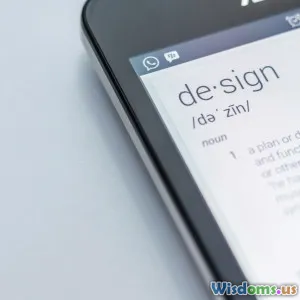
Why Authenticity Beats Flash in Modern Corporate Presentations
7 min read Discover why authenticity trumps flashy visuals in corporate presentations for genuine engagement and lasting impact. (0 Reviews)
Why Authenticity Beats Flash in Modern Corporate Presentations
In an era dominated by rapid digital communication and overflowing visual stimuli, corporate presentations often fall into the trap of prioritizing flash over substance. From glittering slide animations to dazzling graphics and spectacle-driven delivery, it might seem tempting to dazzle audiences into attention. However, strong evidence suggests that being authentic – grounded, transparent, and relatable – actually outperforms flashy aesthetics in fostering engagement, trust, and effectiveness.
This article explores why authenticity reigns supreme in modern corporate presentations and how presenters can harness it to captivate and move their audiences.
The Illusion of Flash: Why It’s Often a Double-Edged Sword
Flashy presentations have long been seen as markers of professionalism and effort. Animations, elaborate slide transitions, and vividly stylized charts can undoubtedly catch the eye. Yet, many corporate audiences today are fatigued by over-the-top visuals with little substance underneath.
The Cognitive Overload Problem
Studies on cognitive load theory show that excessive visual stimulation can burden the brain, making it harder for audiences to retain core messages (Sweller, 1988). A flashy presentation can inadvertently distract from or dilute the message, causing viewers to remember spectacle rather than substance.
The Trust Deficit
Corporate environments thrive on trust and credibility. Flashy presentations, when overused or disconnected from the speaker's authentic voice, can feel contrived or insincere. Harvard Business Review reports that audiences often perceive overly polished or gimmicky presentations as less trustworthy, favoring candid, unscripted communication instead (Gallo, 2016).
The Power of Authenticity in Presentations
Authenticity means showing genuine personality, sharing real stories, and communicating transparently – not just what’s easy or expected. Here’s why this resonates more:
1. Builds Deep Emotional Connection
Research from the Journal of Applied Psychology suggests messages perceived as authentic trigger greater emotional engagement and memory retention (Avey et al., 2011). When leaders are candid about challenges and successes – rather than presenting overly scripted pitches – audiences feel emotionally connected and invested.
Example: Patagonia’s founder, Yvon Chouinard, is known for candid talks about environmental responsibility struggles. His authentic tone compels stakeholders to trust and support company initiatives more deeply than flashy marketing campaigns ever could.
2. Enhances Audience Trust and Credibility
Authenticity signals confidence and honesty. A presenter who admits uncertainties or incorporates honest reflections is seen as more credible than someone relying solely on sleek visuals. This aligns with a 2019 Edelman Trust Barometer finding: 63% of people trust companies more if they communicate transparently about challenges.
3. Makes Content Relatable and Memorable
Flashy elements can impress momentarily, but stories rooted in real-life experiences stick longer. People remember narratives that connect to their own values or challenges. Authentic presentations emphasize human stories, fostering relatability far beyond flashy graphs.
Real-World Insights: Brands and Leaders Embracing Authenticity
Apple’s Shift to Authentic Storytelling
Though Apple is known for polished launches, their recent shifts highlight authenticity. CEO Tim Cook’s candid discussions about privacy concerns and company values resonate strongly compared to prior performances focused on technical spectacle.
Microsoft’s Empowerment Narrative
Microsoft’s corporate messaging around inclusion and empathy embraces personal stories of employees, fostering connection and alignment with contemporary societal values – much more impactful than mere visuals.
How to Infuse Authenticity in Your Corporate Presentations
Here are actionable steps presenters can take:
1. Know Your Core Message Thoroughly
Celebrate simplicity and clarity over complexity. Authenticity rests on confidence in the message itself, not just its packaging.
2. Share Personal or Team Stories
Incorporate honest anecdotes or case studies. For example, discussing a project failure and learnings instills credibility.
3. Speak Naturally, Not Scripted
Adopt a conversational tone rather than memorized scripts. Small imperfections humanize the presenter.
4. Focus on Audience Needs and Feedback
Engage the audience by addressing real concerns instead of showcasing unrelated flashy content.
5. Use Design to Support, Not Distract
Minimalistic, clean designs with consistent fonts and colors help reinforce messages instead of distracting from them.
Conclusion: Authenticity as the Strategic Advantage
In a corporate landscape crowded with polished pitches and overwhelming stimuli, authenticity offers clarity, connection, and credibility. Audiences today seek leaders and brands that are sincere, transparent, and relatable. Far from being a disadvantage, embracing authenticity in corporate presentations drives deeper engagement and fosters trust – priceless assets that flashy visuals alone simply cannot buy.
Presenters who prioritize authenticity not only elevate their storytelling but also catalyze stronger business relationships and outcomes. In essence, when it comes to modern corporate presentations, being real beats being flashy — every single time.
References:
- Sweller, J. (1988). Cognitive load during problem solving: Effects on learning. Cognitive Science.
- Gallo, C. (2016). The Presentation Secrets of Steve Jobs. Harvard Business Review.
- Avey, J. B., Avolio, B. J., Crossley, C. D., & Luthans, F. (2011). Psychological ownership: Theoretical extensions, measurement, and relation to work outcomes. Journal of Organizational Behavior.
- Edelman Trust Barometer (2019). Global Report.
Rate the Post
User Reviews
Popular Posts




















